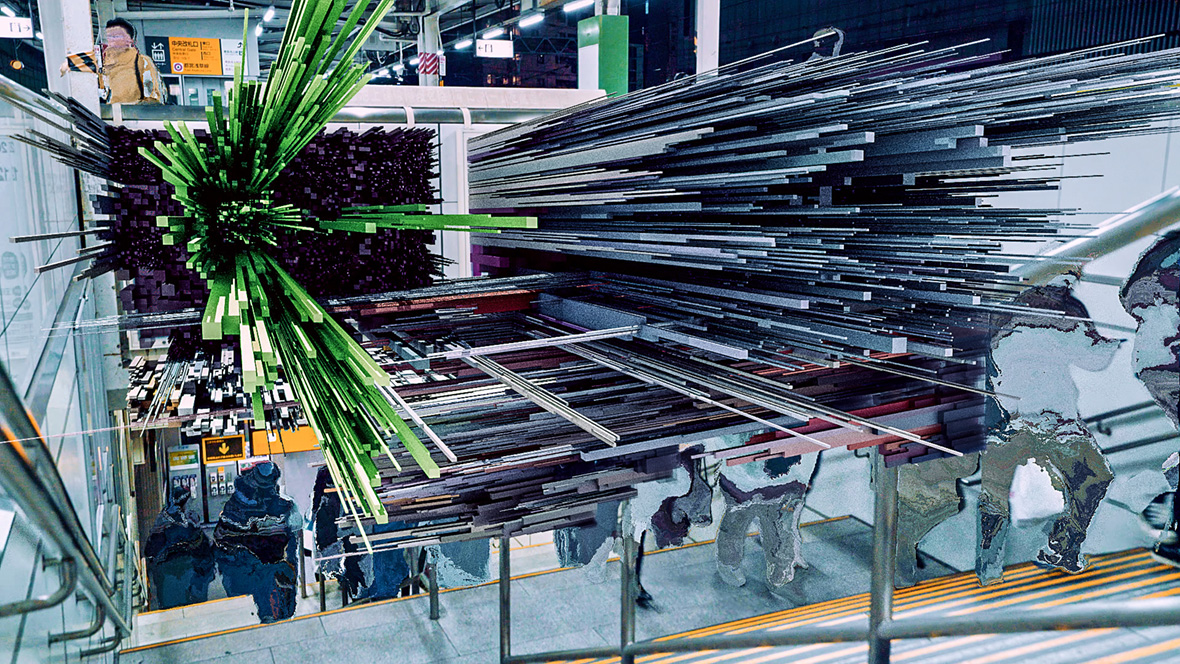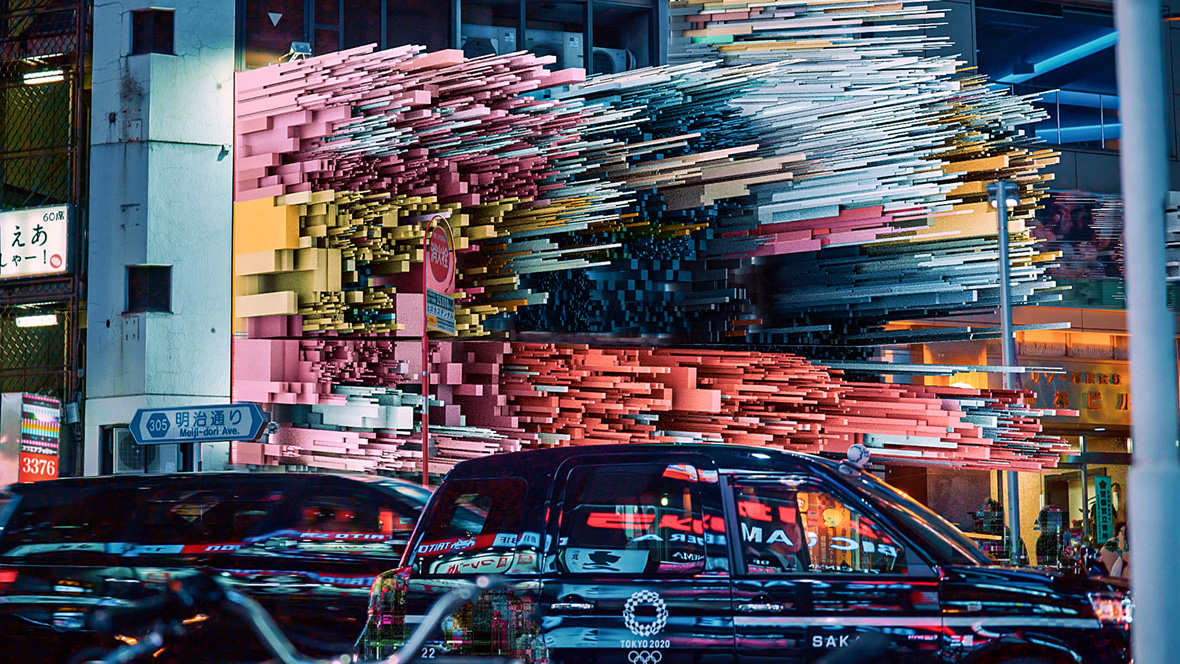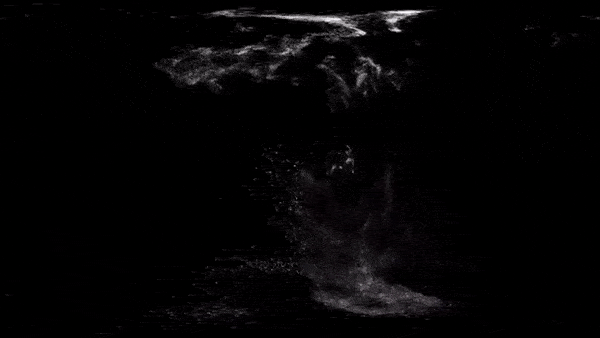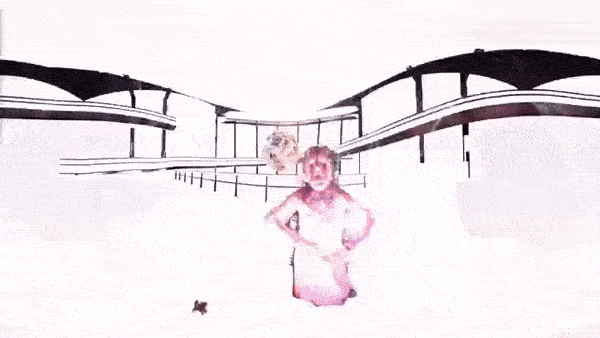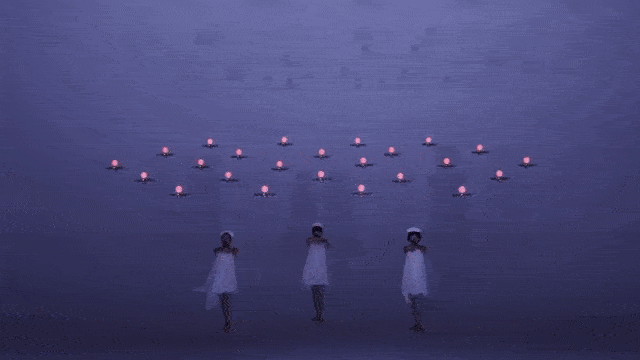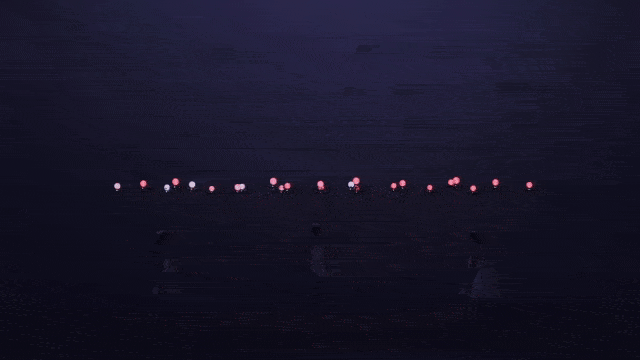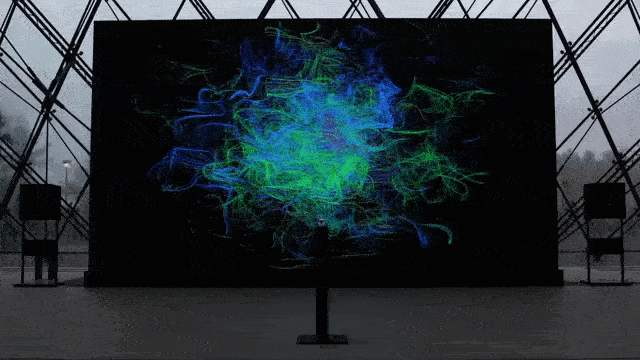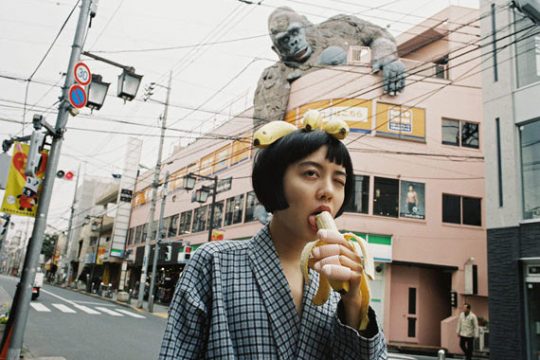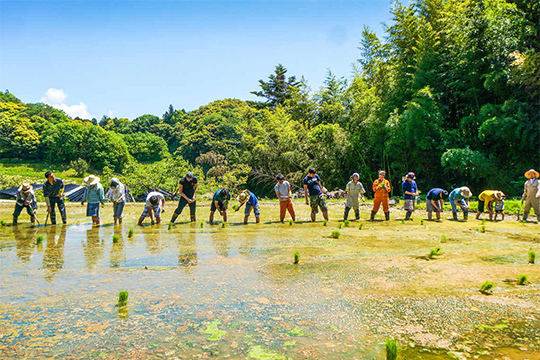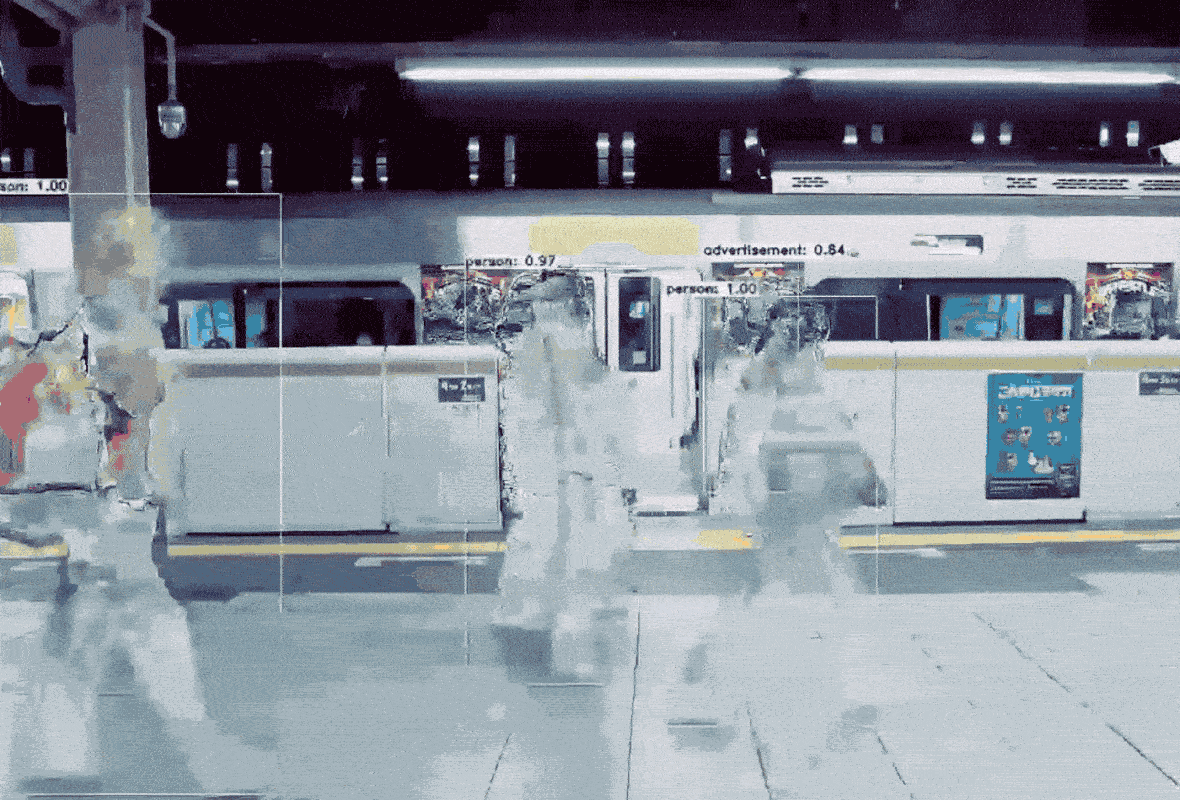
Daito Manabe is an artist, interaction designer, and co-founder of Rhizomatiks, a firm that aims to bridge the gap between art and technology. The ambition comes naturally for Manabe, whose fascination with programming and sound began when he was just 10 years old. The music, sound effects, and aesthetics of video games in the 1980s captivated him, and he spent his teenage years trying to reproduce them on his NEC computer and a DX-7 synthesizer. “I wanted to make a shooting game like Gradius,” he recalls.
He has come a long way since then, boasting an impressive list of collaborations with notable artists such as Björk, Jesse Kanda, and Ryuichi Sakamoto. Perhaps most notable is Rhizomatiks’ work on a production for the closing ceremony of the Rio De Janeiro Olympics in 2016, which projected images of events to be held at the 2020 Tokyo Olympics onto live performers. His most recent work includes music videos for Squarepusher’s “Terminal Slam” and KAZU’s “Come Behind Me, So Good!”.
还记得 80 年代的电子游戏吗?那种有魔性的声音效果和美学风格让 Rhizomatiks 的创始人之一Daito Manabe 着迷不已,十几岁的时候,他就经常用 NEC 电脑和 DX-7 合成器进行模仿创作。他说:“我想制作像《宇宙巡航机》(Gradius)这样的射击游戏。”
如今作为一名艺术家和互动设计师,Daito 把艺术与科技无缝融合,对 10 岁开始就喜欢上编程和音乐的他来说,成立公司并把自己对观念发扬光大是水到渠成的事情。一路到现在,他已经陆续与 Björk、Jesse Kanda 和坂本龙一等著名艺术家合作过。其中最著名的可能是他们为 2016 年里约热内卢奥运会闭幕式制作的作品,将关于 2020 年东京奥运会上的影像投影到了现场表演者身上。而他的最新作品包括为 Squarepusher 的《Terminal Slam》和 KAZU 的《Come Behind Me,So Good!》制作的音乐 MV。
Music is central to Manabe’s work because it is intimately tied to his interests in technology. While studying mathematics in university, he pursued music by working as a DJ and playing in a jazz band. As a DJ, Manabe opened for Flying Lotus and Squarepusher in their Tokyo tours. Though he is mainly focused on multimedia projects, Manabe still continues to pursue music on his own. He even took up dance as a hobby while collaborating with a Japanese techno-pop unit called Perfume. “I’ve been dancing for about five years now, and I’m not getting any better,” he jokes. He also plans to release some original music later this year. “Of course, it’s not just music, and there’s going to be something else related to it as well, so please check it out,” he hints.
在 Daito 的作品中,音乐的作用至关重要,它和 Daito 对科技的兴趣密切关联。在大学修读数学专业时,他同时兼职 DJ,还加入了一支爵士乐队,曾为 Flying Lotus 和 Squarepusher 的东京巡回演唱会开场。虽然 Daito 专注于多媒体项目,但一直未放弃追求自己创作音乐。在与日本流行电音乐队 Perfume 合作期间,他甚至还喜欢上了跳舞。他开玩笑说:“我跳舞已经有五年了,但是我的舞蹈水平没有任何进步。”他还计划在今年晚些时候发行自己的原创音乐。“当然,除了音乐,还会有其它一些相关的东西,所以记得关注一下。”他透露道。
无法观看?前往腾讯视频
Aside from his music, Manabe is world-renowned for his work in interaction design. His trademark is awe-inducing multimedia performances that are extremely R&D-intensive—drawing inspiration from robotics, real-time data visualization, machine learning, and computer-generated imagery, to name a few. Culminating in a 2016 Award of Distinction at Prix Ars Electronica Festival, Manabe produced a complex technical setup involving 2 dancers, drones, and 3D scanning for Nosaj Thing’s “Cold Stares” music video.
He also directed live AR/VR imaging for Björk’s performances of “Quicksand.” Manabe is constantly working to push the boundary of what can be done, both technically and artistically. His work often has a performative aspect to it, whether it be Manabe himself performing with another prolific artist, or his technology.
在音乐之外,Daito 最为人熟知的是他的交互设计作品,令人震撼的多媒体表演融入了大量的创新科技,包括机器人技术、实时数据可视化、机器学习和计算机成像等。2016 年,Daito 凭借在电子音乐制作人 Nosaj Thing 的 MV《Cold Stares》中的出色表现,摘得 Prix Ars Electronica Festival 的 “杰出” 奖项,视频中舞者、无人机以及 3D 扫描线条等元素随音乐撕扯着整幅画面。
2018 年,他也还在冰岛女王 Björk 的音乐视频直播《Quicksand》中指导过 AR/VR 成像。可以说,Daito 一直在努力超越技术和艺术上的界限。无论是和其他艺术家合作表演,或是他所呈现的技术,他的作品始终带有的表演性让他与众不同。
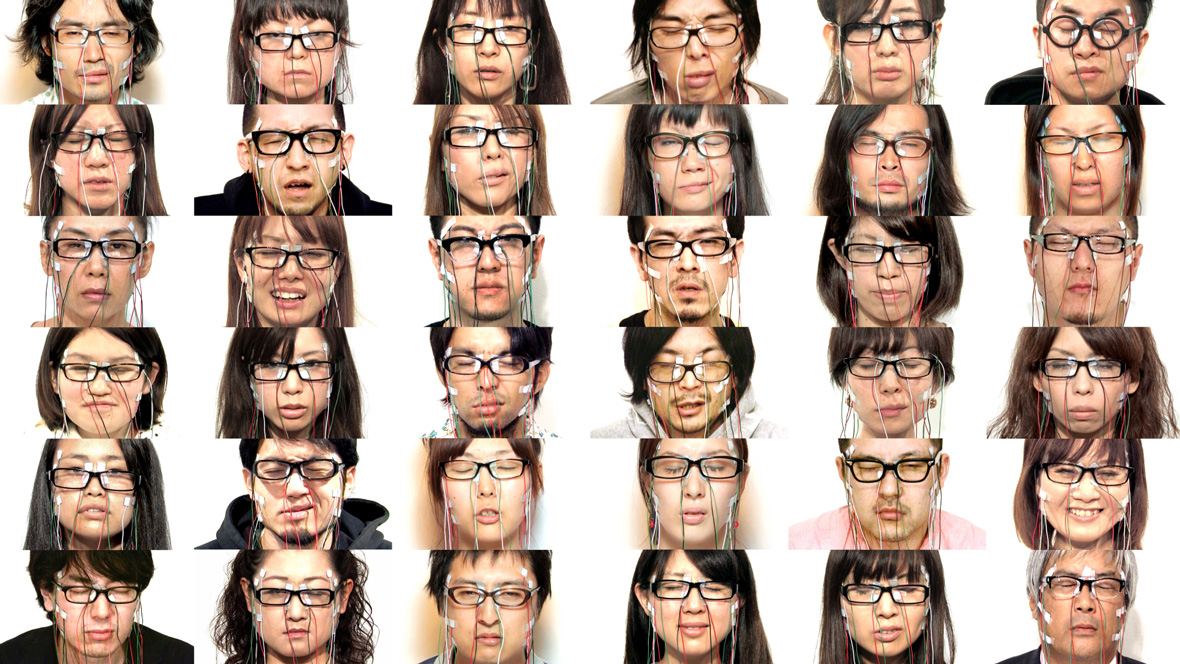
Manabe has a long history of using cutting-edge technology to augment, manipulate, and interface with the human body. In one of his first experiments to go viral, “Electric Stimulus to Face,” he electrically stimulated his own face, making his facial muscles contract along with music. Though he has since moved more towards choreographing machines in productions such as 24 Drones, where drones flew alongside dancers in dizzying synchrony, he is again meditating on how technology can directly interface with the human body.
Daito 经常使用尖端技术来增强、操纵,以及实现与人体的交互。在最初一个广为流传的实验“Electric Stimulus to Face”(面部电刺激)中,他用电刺激自己的脸部,使面部肌肉随着音乐而收缩。尽管此后他在作品中更偏向于编舞机器,譬如在《24 架无人机》中与舞者同步移动的无人机,但他一直在思考如何让科技直接与人体交互。
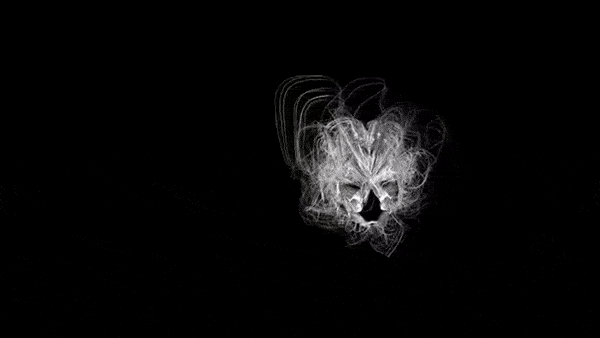
“Human beings and machines are universal themes, but the brain, which was once thought to be a black box, and its output of emotions became more approachable and relevant subjects thanks to machine learning; questions that used to be philosophical are now becoming questions of computer science and mathematics,” Manabe says. He also highlights the reality of brain-machine interfaces today; there already are non-invasive devices that can activate or inhibit certain parts of the human brain, simply through the use of magnetic fields or ultrasonic waves. Manabe considers that idea, saying “it is interesting you can directly control the brain by transcranial magnetic stimulation or ultrasonic stimulation.”
“人机主题很普遍,有赖于机器学习,曾经被视为黑匣子的大脑及其情感输出变得更加容易理解。曾经属于哲学领域的问题,现在也逐渐变成计算机科学和数学的问题。” Daito 说道。此外,他还强调称,如今的脑机接口已经出现了一些非侵入性设备,可以通过磁场或超声波来激活或抑制大脑的某些部位。Daito 也考虑过这种技术,他说:“你可以通过经颅磁刺激或超声刺激直接控制大脑,这是很有趣的事情。”
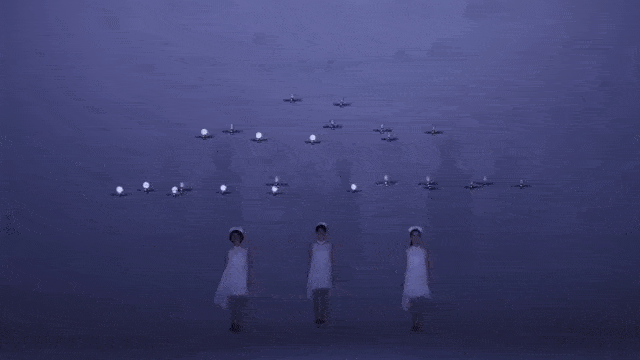
The process of converging on a project concept often happens in an iterative process for Manabe. As conceptual director of Rhizomatiks, Manabe does not narrow down the idea in the beginning, but rather takes a practical approach of trial and error, in a process he describes as “designing the path to the goal.” Technological development is a strong influence on Manabe: “I’m inspired when I look at new technologies. Because it makes things possible that weren’t possible before,” he says.
对 Daito 而言,确定项目概念通常是一个迭代的过程。作为公司的概念总监,他在一开始并不会刻意限定概念,而是通过实践反复试验,他称之为一个“设计通往目标的路径”的过程。科技发展对 Daito 也有着重要影响,“当我看到新技术时,会备受鼓舞启发,因为新技术让以前不可能的事情变成可能。”他说道。
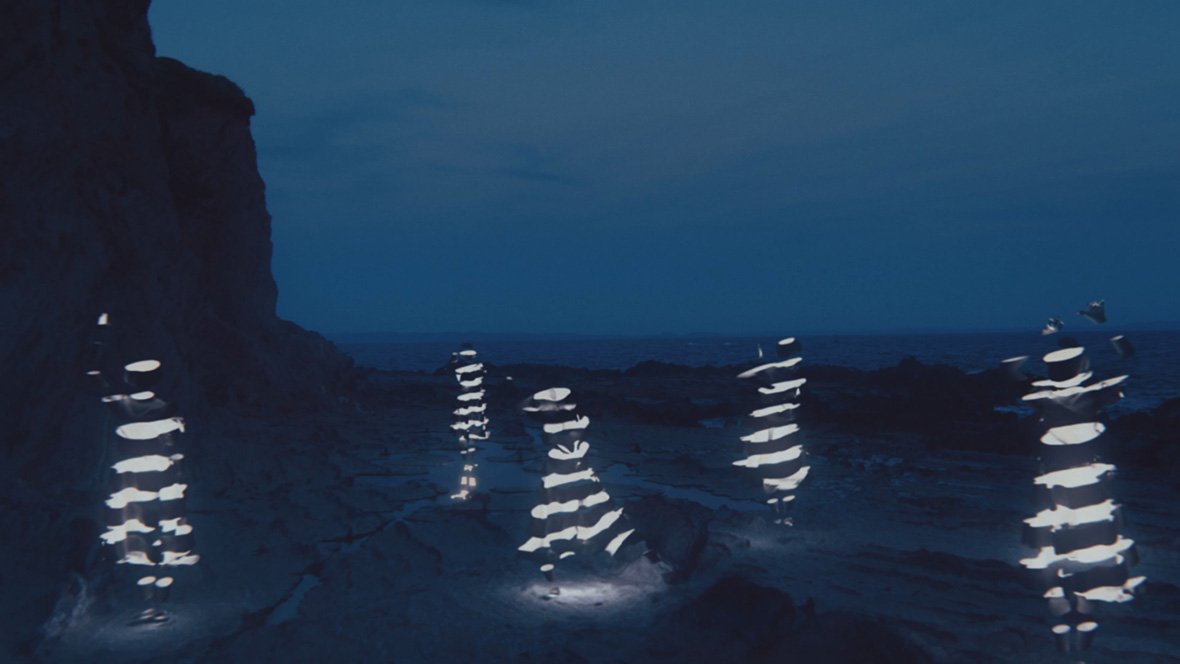
Manabe is very keen, however, to caution that his works aren’t technological demonstrations or gimmicks. In contrast to an increasingly saturated field of new-media artists and advertising agencies that often leverage flashiness as a selling point, Manabe strives to weave complex stories in his art that the audience can gradually unravel. “You can even create a work of art to provoke thought or raise a question, letting the audience think for themselves when you don’t know the answer,” he explains. In comparison to what he calls the necessity of “straightforward storytelling” in entertainment and advertising, he espouses the view that in art the audience must be inquisitive, willing to work alongside the artist in pursuit of greater understanding.
但是,Daito 也特别小心不让自己的作品沦为纯粹的技术演示或技巧。不同于越来越多喜欢用炫目科技作为卖点的新媒体艺术家和广告公司,他努力在自己的艺术作品中加入复杂的故事,让观众逐渐理解。他解释说:“你甚至可以将自己也不知道答案的问题,创作成艺术作品,激发想法或提出问题,让听众自己思考。”他认为,不同于娱乐和广告中“直截了当的故事讲述”,他更倾向于另一种观点,即在艺术中,观众必须是好奇的,愿意与艺术家一起努力以寻求更多的理解。
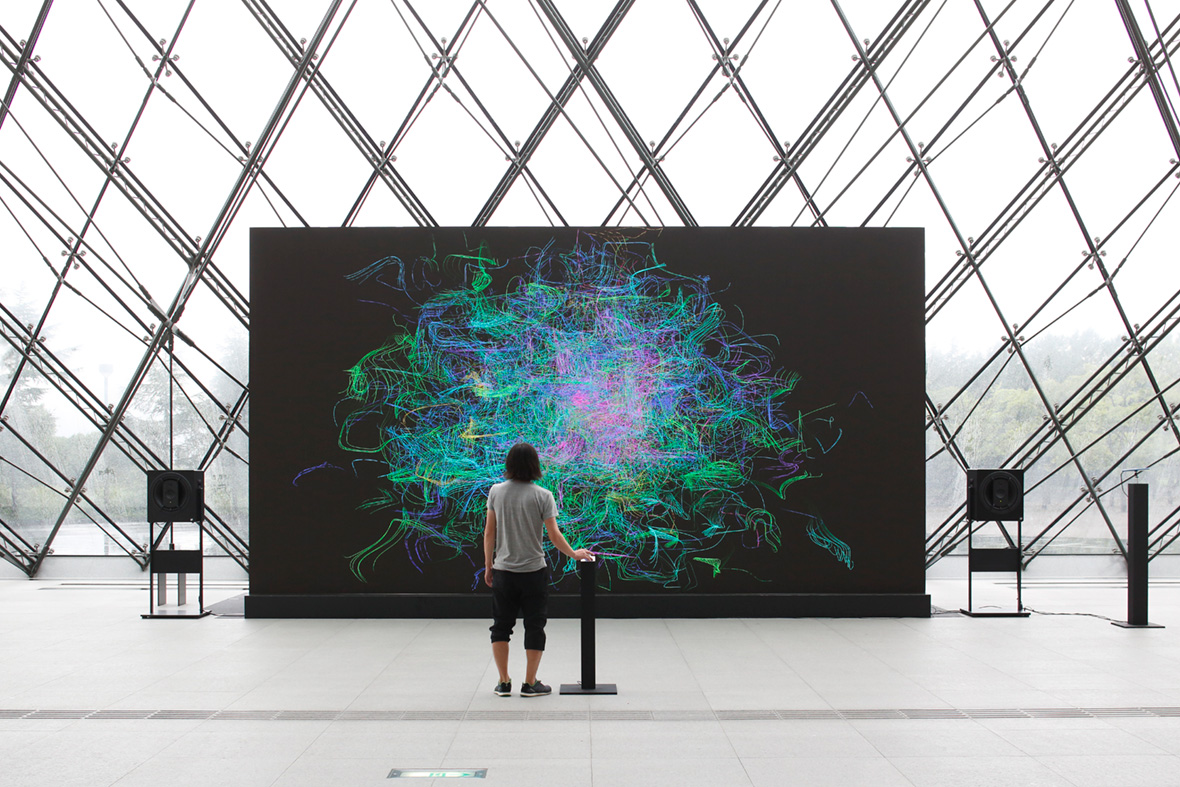
For Manabe, art is “not just about doing something crazy.” He believes that the things we see and hear every day can take on new value, and become art. With technology, Manabe takes this a step further and examines sounds and sensations that are imperceptible to humans. In his 2015 collaboration with Ryuichi Sakamoto, Sensing Streams, Manabe explores the relationship between humans and the cities we build. The production makes electromagnetic waves both audible and visible by capturing ambient signals from cellphones, Wi-Fi, and FM radio, and subsequently generating visuals on a large screen. Various representations of the data, ranging from soundwaves to vibrant orbs, are affected in realtime by the surrounding environment. The audience can turn a dial to manipulate the range of frequencies, and the use of cellphones or other electronic devices in the area will alter the imaging. Whether it is by encouraging audiences to discover such parallels or by superimposing projections onto dancers in the form of augmented reality, Manabe embraces the intersection of technology and the physical world.
With Rhizomatiks, Manabe creates art to pose questions about new technology and the ensuing possibilities of how it could control, interact with, or even dance alongside us. Just like the interplay between a glowing drone and a dancer on a dark stage, Manabe welcomes a future in which man and machine can become vehicles of expression for each other.
对于 Daito 来说,艺术“不仅仅是做疯狂的事情”。他认为,我们每天的所见所听都能呈现新的价值,成为艺术。通过技术得以更进一步地探索着人类所无法察觉的声音和感觉。在 2015 年与坂本龙一在《Sensing Streams》的合作中,Daito 深入探讨了人类与城市之间的关系。通过采集来自手机、Wi-Fi和 FM 广播的环境信号,随后在大屏幕上生成视觉效果,将电磁波变成人们听得见和看得见的影像。数据的各种表现形式(从声波到振动的球体)都会受到周围环境的实时影响。观众可以转动拨盘来控制频率范围,在周围使用手机或其他电子设备也会改变成像。无论是鼓励观众进行此类探索,或是通过增强现实,将投影叠加到舞者身上,Daito 一直在努力融合技术与现实世界。
Daito 在 Rhizomatiks 中所创造的艺术,旨在提出有关新技术的问题,了解技术控制人类,与人互动,甚至是共舞的可能性。正如黑暗舞台上那些发光的无人机和舞者的互动一样,Daito 希望能看到人类与机器在未来可以成为彼此表达的工具。
Like our stories? Follow us on Facebook and Instagram.
Website: www.daito.ws
Instagram: @daitomanabe
YouTube: ~/daitomanabe
Contributors: Lia Coleman, Eugene Lee
Chinese Translation: Olivia Li
Images Courtesy of Daito Manabe
Website: www.daito.ws
Instagram: @daitomanabe
YouTube: ~/daitomanabe
供稿人: Lia Coleman, Eugene Lee
英译中: Olivia Li
图片由 Daito Manabe 提供

